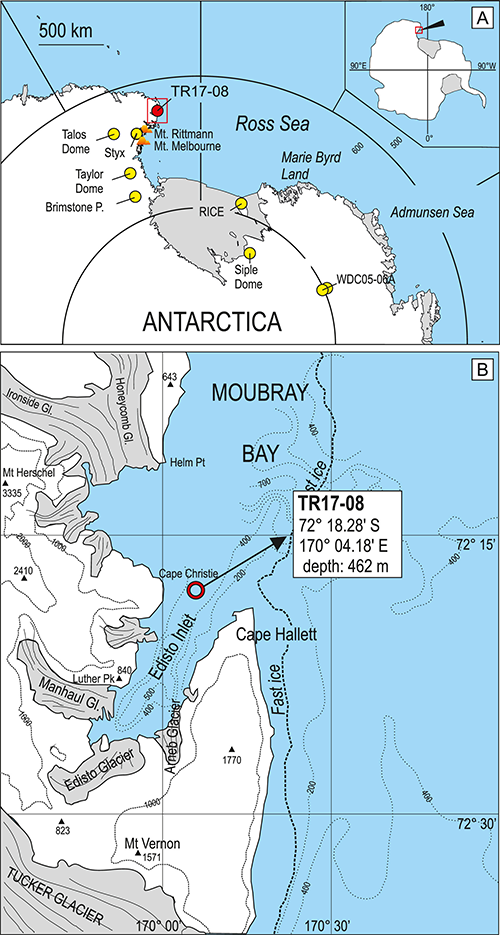Cryptotephras in the marine sediment record of the Edisto Inlet, Ross Sea: Implications for the volcanology and tephrochronology of northern Victoria Land, Antarctica

Di Roberto A., G. Re, B. Scateni, M. Petrelli, T. Tesi, L. Capotondi, C. Morigi, G. Galli, E. Colizza, R. Melis, F. Torricella, P. Giordano, F. Giglio, A. Gallerani, K. Gariboldi (2023).
Quaternary Science Advances, Volume 10, https://doi.org/10.1016/j.qsa.2023.100079.
Abstract
We present the results of the tephrochronology study of a 14.49 m long marine sediment core (TR 17–08) collected in the Edisto Inlet, Ross Sea (Antarctica). The core contains four cryptotephra layers at 55–56, 512–513, 517–518, and 524–525 cm of depth, which have been characterised by a detailed description of the texture, mineral assemblage, and single glass shards major and trace element geochemistry. The age model of the investigated sedimentary sequence, based on radiocarbon dating, indicates that the topmost cryptotephra correlates with the widespread 1254 CE tephra erupted by a historical eruption (696 ± 2 cal yrs BP) of Mount Rittmann, in northern Victoria Land. Deeper cryptotephra layers were derived from previously unknown explosive eruptions of Mount Melbourne volcano and were emplaced between 1615 cal yrs BP and 1677 cal yrs BP, e.g. between the 3rd and 4th centuries CE. This discovery demonstrates that the Mount Melbourne volcanic complex has been highly active in historical times allowing significant progress in the current understanding of regional eruptive history. Moreover, from a tephrochronological point of view, the detected cryptotephra provide new regional isochron markers to facilitate high-precision correlations and help stratigraphically constrain changes in environmental and climatic conditions that are identified by multidisciplinary studies.


Devi effettuare l'accesso per postare un commento.